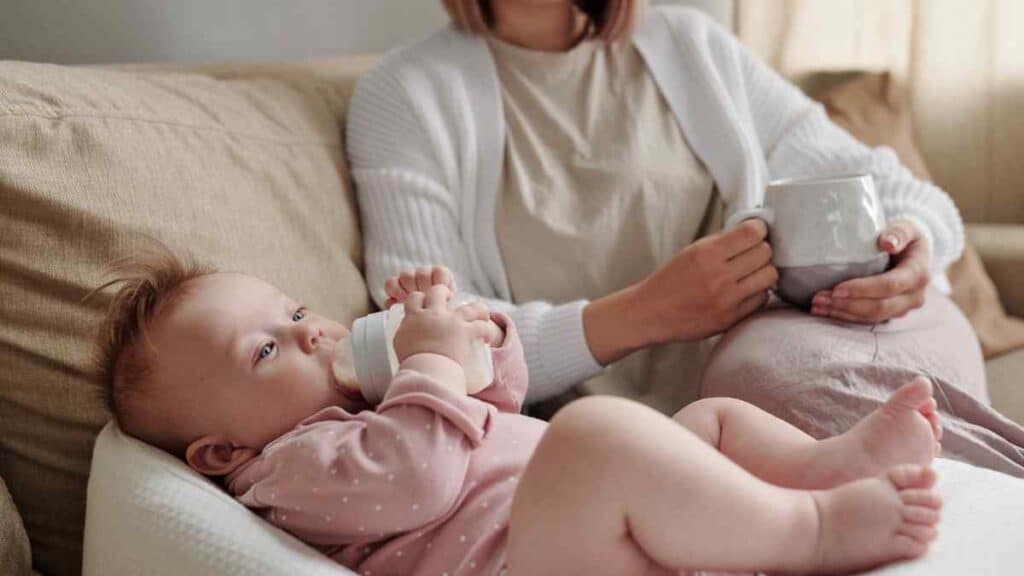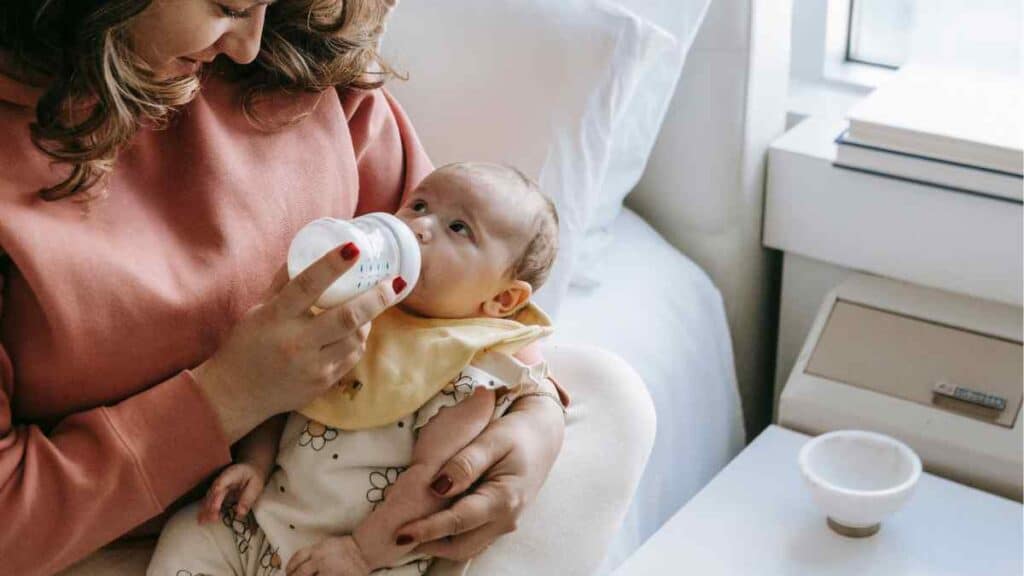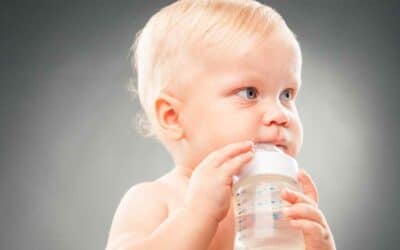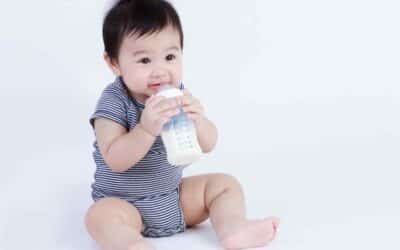When it comes to your baby’s wardrobe, it’s not just the element of cuteness that commands the stage. The upkeep and longevity of these miniature clothes play an integral role in maintaining their charm and functionality. In this seemingly mammoth task, sorting the clothes can be your stepping stone. This process requires keen attention to details, such as the material and color of the clothes. Acknowledging each fabric’s unique requirement can make the difference between well-kept, vibrant baby clothes or faded, worn-out ones. Furthermore, sorting by color is a fundamental practice that helps avoid any color bleed during washes, so your baby’s wardrobe continues to look its very best.
In this blog, we will walk you through a comprehensive guide to managing your baby’s clothing ensemble with relative ease, kicking it off with sorting. We’ll provide you with a pro-tip to pre-wash newborn clothes using a gentle detergent. After mastering the art of sorting, we shall delve into pre-treating stains, which are, as every parent will agree, common occurrences on baby clothes. Each type of stain requires a specific treatment, and our tips can be of immense help in this regard. Beyond this, we’ll look at the actual washing process, focusing on water temperature, detergents, and washing methods suitable for different materials. We’ll even share a suggestion to make clothes smell delightful post-wash. Finally, we’ll close out with tips on drying and maintaining baby clothes, to ensure their longevity. So, let’s get started!

Sorting Baby Clothes
The first step to ensuring that your little one’s clothes stay as good as new is sorting. This exercise might seem a bit daunting at first, especially when wondering just how much laundry your newborn has, but rest assured, it’s easier than you think. Begin by sorting the baby clothes based on their material. You will typically come across clothes made of cotton, polyester, and blends, among others. This is important as different fabrics require different care instructions.
Next, following traditional wash clothes practice, sort the clothes by colors: whites, colors, and darks. The aim here is to prevent any color bleed, which could potentially ruin the clothing’s original hue. With everything sorted in designated piles, you’re already halfway there!
Now, a pro-tip for newborn clothes is to pre-wash baby clothes using a gentle detergent. We recommend Dreft Stage 1: Newborn Baby Liquid Laundry Detergent. This baby laundry detergent has been specifically designed for a newborn’s delicate skin and is effective at removing stubborn stains while being kind to colors and fabrics.
Remember, sorting is the first crucial step to preserving your baby’s clothing and keeping it looking fresh and adorable. Your organized effort in sorting will pay off in spades once you see those cute little outfits lasting longer than you anticipated.
Sorting Baby Clothes
The first step to ensuring that your little one’s clothes stay as good as new is sorting. This exercise might seem a bit daunting at first, especially when wondering just how much laundry your newborn has, but rest assured, it’s easier than you think. Begin by sorting the baby clothes based on their material. You will typically come across clothes made of cotton, polyester, and blends, among others. This is important as different fabrics require different care instructions.
Next, following traditional wash clothes practice, sort the clothes by colors: whites, colors, and darks. The aim here is to prevent any color bleed, which could potentially ruin the clothing’s original hue. With everything sorted in designated piles, you’re already halfway there!
Now, a pro-tip for newborn clothes is to pre-wash baby clothes using a gentle detergent. We recommend Dreft Stage 1: Newborn Baby Liquid Laundry Detergent. This baby laundry detergent has been specifically designed for a newborn’s delicate skin and is effective at removing stubborn stains while being kind to colors and fabrics.
Remember, sorting is the first crucial step to preserving your baby’s clothing and keeping it looking fresh and adorable. Your organized effort in sorting will pay off in spades once you see those cute little outfits lasting longer than you anticipated.
Furthermore, sort by the type of garment as well. Look out for delicate items like knits, lace onesies, or tiny socks that could easily get lost. Not only will this make it easier when it comes to the washing machine, but it also doubles up as an excellent organizing strategy. Once this is done, you’ll be surprised at how much this small change streamlines your laundry routine. After all, less time spent on laundry means more time cuddling with your little one. Sorting baby clothes doesn’t have to be a chore, but rather, treat it as a roadmap to maintaining the longevity of your newborn’s clothing. Keep this guide at hand, so your adorable baby’s outfits are always picture-perfect!

Pre-Treating Stains
Have you ever noticed how your little one always seems to create the most stubborn stains? Whether it’s smeared food, urine, or fecal stains, these common baby culprits can put even the most durable of clothes to the test. However, with a bit of knowledge and the right products, you can easily pre-treat these stains to keep your baby’s clothes looking clean and fresh.
For food stains, it’s recommended to hand wash the affected garment under cold water as soon as possible, preventing the stain from setting. Then lightly scrub with a small amount of baby laundry detergent until you see improvement.
Urine stains, on the other hand, are usually easier to deal with. Rinse the clothing in cool water, apply stain remover before washing. Remember not to dry untreated urine stains, as the heat can cause the stain to set.
Coming to fecal stains, especially if you’re using cloth diapers, these may require some extra attention. Scrape off any excess material without rubbing it into the fabric, then rinse under cold water. Apply an enzyme-based stain remover and let it sit for at least 15 minutes before washing. Remember to soak clothes pre-wash to help remove solid waste.
Now, if you’re faced with heavily stained baby clothes, don’t fret. We suggest using Dreft Stage 2: Active Baby Liquid Laundry Detergent. Specifically formulated for babies making the move from a newborn to active toddler, this detergent is designed to tackle tough stains and is hypoallergenic, making it safe for your little one’s skin.
Through pre-treating stains, you can ensure the longevity and quality of your baby’s clothes. It may take a little extra time, but the results are well worth the effort!
Washing Baby Clothes
The actual washing phase is crucial for your child’s clothing care. Once you have sorted and pre-treated your baby’s clothes, it’s time to get your washing machine ready. Start by setting the water temperature. For most baby clothes, warm water is ideal as it can help remove stains without fading the colors. However, for heavily soiled clothes, hot water may be advisable.
Next, select the cycle type. Delicate fabrics like wool baby clothes will need a gentle setting, and for a more protective approach, consider placing them into a mesh laundry bag. This will help minimize potential snags, tears, or damage during the wash cycle. Sturdier materials like cotton can handle a regular cycle. Make sure not to overload the washer, as clothes need space to move around and get cleansed thoroughly.
For detergents, consider the age of your little one. If you’re dealing with newborn clothing, opt for Dreft Stage 1: Newborn Liquid Laundry Detergent. It’s designed to be gentle on the newborn’s sensitive skin while efficiently cleaning their clothes.
When washing clothes for older, more active babies, you might want to use Dreft Stage 2: Active Baby Liquid Laundry Detergent. This version handles tough stains better and is still kind on the baby’s skin.
For an extra touch of freshness, consider adding Dreft Blissfuls Laundry Scent Booster Beads to your wash. These beads will leave your baby’s clothes with a delightful, long-lasting, baby-fresh scent.
With these tips, washing baby clothes can become a hassle-free routine, leaving you with clean, fresh, and bright outfits that are ready for your little one to wear.

Drying Baby Clothes
Post-washing, drying your baby’s clothes is an equally essential process. The drying method can significantly affect the lifespan and quality of a baby’s clothes. Ideally, the gentlest way to dry is to air-dry them. This method supports the maintenance of shape, color, and size for the long term. Lay clothes flat on a towel or hang them up to dry, ensuring they are well-spread to allow air circulation.
However, if you’re in a hurry or reside in a region with high humidity, machine drying could be helpful. This is where careful selection of drying settings becomes critical, especially when dealing with more sensitive materials like wool baby clothes that tend to shrink under high temperatures. If you need to use a machine dryer, select a low-heat setting for delicate clothes or a medium setting for sturdier fabrics, such as cotton.
Remember, hand washing and air-drying are considered to be the best options when it comes to maintaining the quality of your baby’s clothes. However, circumstances may necessitate machine washing and drying. In these cases, always use appropriate settings to minimize potential damage.
All in all, it’s about finding the right balance that caters to the needs of specific garments while respecting their fabric and structure. Heed the care labels on your baby’s clothes and own clothes, and you should have no trouble keeping them in the best possible condition for the longest time.
Maintaining Baby Garment Care
Taking care of your baby’s garments is an ongoing task. As your little one grows and starts exploring their world, you need to keep an eye out for signs of wear and tear on their clothes. By regularly checking their wardrobe, you can ensure that the garments are still in good shape and provide the needed comfort and protection.
When you spot clothes with small stains, holes, or tears, consider repairing them to extend their life. Mending clothes can be an eco-friendly and cost-saving gesture. You can sew buttons, patch holes, or re-stitch seams, giving the outfit a second chance in your baby’s clothing rotation.
If a garment is no longer deemed suitable for everyday use, repurposing it for other uses, such as cleaning cloths or dust rags, is a great way to recycle and upcycle the materials.
As your baby grows, saying goodbye to outgrown clothes can be a sentimental process. You might want to keep a few pieces as mementos or hand them down to younger siblings or friends’ babies. Alternatively, you can donate gently used clothes to local charities or consignment shops where parents in need can benefit from your generosity. For those garments that still hold a strong emotional value, consider storing them in an airtight container to preserve them for future generations.
Maintaining your baby’s garment care is a continuous process, but with vigilance and mindful decisions, you can ensure that each outfit lives its fullest life and provides care and comfort to your little one. Moreover, the sorting and caring habits you instill today will not just benefit your baby’s attire, but also, in the long run, foster sustainable living and laundering practices.

Conclusion
In conclusion, mastering baby garment care is an essential skill for parents who want to protect the quality, longevity, and comfort of their little one’s clothing. By following the steps outlined in this guide sorting, pre-treating stains, washing, drying, and maintaining the clothes you can provide your baby with a wardrobe that stays fresh, comfortable and looks adorable.
Embarking on this journey not only saves you money and resources in the long run but it also ensures that your baby’s sensitive skin is safeguarded against harsh chemicals and irritants. Furthermore, adopting these methods enables you to contribute to a more sustainable and eco-friendlier lifestyle. So, embrace these baby garment care techniques, invest your time and love toward the well-being of your little one, and transform the chore of laundry into an act of devotion and care for your baby.
Did this article help you? If so, feel free to share it on your social media accounts. And if you have any questions, don’t hesitate to ask us!



